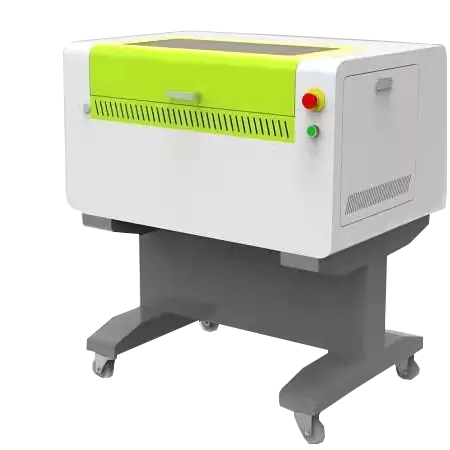The cooling system in a CO2 laser engraving machine plays a crucial role in maintaining optimal operating temperatures and preventing overheating of key components. The laser tube, which generates the laser beam, is a critical element that requires efficient cooling.
Here’s how the cooling system typically works in a CO2 laser engraving machine:
- Coolant Circulation:
- CO2 laser engraving machines use a water-based coolant or a mixture of water and antifreeze as the primary cooling medium. This coolant circulates through a closed-loop system to absorb heat generated during the laser engraving process.
- Chiller Unit:
- The cooling system includes a chiller unit, which is a specialized device designed to regulate the temperature of the coolant. The chiller unit is responsible for cooling the water or coolant before it is recirculated through the laser tube.
- Laser Tube Cooling:
- The laser tube is a sealed glass tube containing a mixture of gases that is excited by electrical discharge to produce the laser beam. The cooling system ensures that the laser tube maintains a stable temperature, preventing overheating and maintaining the efficiency of the laser generation process.
- Water Flow Control:
- A pump is used to circulate the coolant through the laser tube and other components that require cooling. The flow rate of the coolant is carefully controlled to ensure efficient heat transfer and temperature regulation.
- Temperature Sensors:
- Temperature sensors are strategically placed within the laser tube and other critical components to monitor the temperature. These sensors provide feedback to the control system, co2 laser engraving machine 40w allowing it to adjust the chiller unit and pump speed to maintain the desired operating temperature.
- Closed-Loop System:
- The cooling system operates in a closed-loop configuration, meaning that the coolant is continuously recirculated. This closed-loop design helps maintain the cleanliness and integrity of the coolant while efficiently dissipating heat.
- Heat Exchanger:
- The chiller unit often includes a heat exchanger that removes heat from the coolant. This heat exchange process is crucial for preventing the laser tube and other components from reaching excessive temperatures.
- Thermal Stability:
- Maintaining thermal stability is critical for the precision and reliability of CO2 laser engraving. The cooling system ensures that the temperature of the laser tube and related components remains within the specified range for optimal performance.
- Air Assist:
- Some CO2 laser engraving machines may also incorporate air assist systems to blow a stream of air or gas onto the material being engraved. This helps with the removal of debris and smoke generated during the engraving process.
- Maintenance Alerts:
- Sophisticated CO2 laser engraving machines may have built-in monitoring systems that provide alerts or warnings if the cooling system requires attention. Regular maintenance, such as checking coolant levels and cleaning filters, is important to ensure continuous and efficient operation.
Efficient cooling is essential to prevent thermal issues, maintain laser tube longevity, and achieve consistent engraving quality. Users should follow manufacturer guidelines regarding the type of coolant to use, proper maintenance procedures, and monitoring of the cooling system to ensure optimal performance of the CO2 laser engraving machine.
